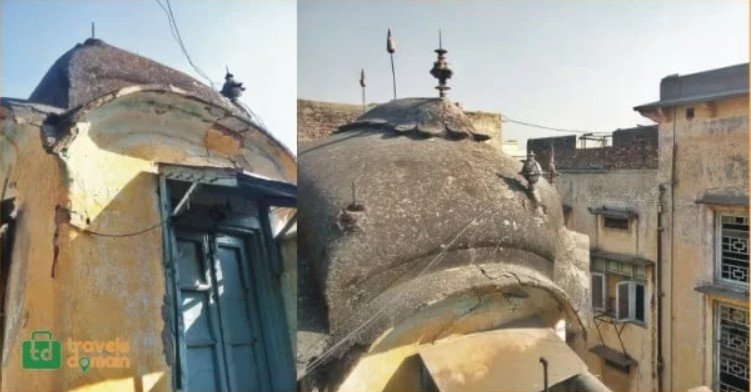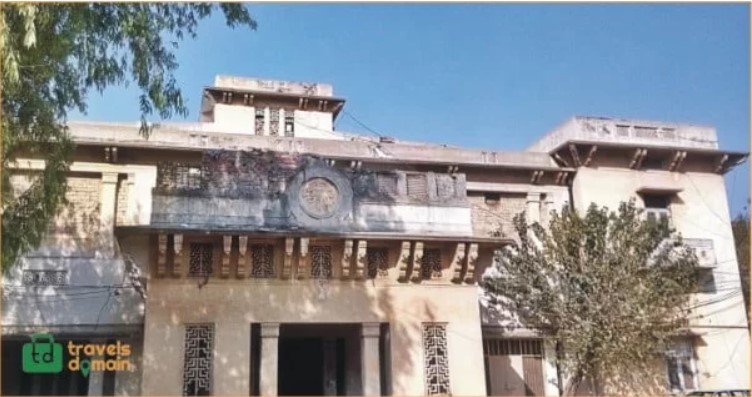Forgotten History and Architect of Chajju De Chaubare Lahore.
Before Mayo Hospital was built, the area was called the garden of Hari Singh Nalwa.
When Ranjit Singh’s army chief did not build a garden here, this area was called Bagh Mai Lado. The mosque of Mai
Lado is still standing to the east of the hospital. Before the garden of My Lado, it was a deserted place where local devotees,
fakirs and Muslim dervishes used to make their abode.

Forgotten History and Architect of Chajju De Chaubare Lahore
When plans were made to build a hospital during the British era, many monuments, samadhis, and graves were lost during
the construction work. Chhaju Bhagat’s Chobara still exists along with part of the hospital surrounded by patient wards.
- The Magnificent Badshahi Mosque: Detailed History and Architecture
- Lahore Fort: History and Architecture of an Attraction in Lahore
In the middle is the Choubara building. Among the ancient buildings in Lahore, if any building is in the best condition,
it is Chhaju’s Chobara. The reason is that it was protected from those who migrated from other areas and the occupation
mafia. It just so happens that Chaubara is hiding due to the entrance of the hospital.
Chajju Shahjahan was a notable Faqir during the era of the king. While studying the fakirs and dervishes of Lahore,
curiously, there is almost no trace of the natives, though a considerable number of them have been present throughout Punjab.
If we consider Chhajo as a pearl in the chain of thousands of non-Muslim fakirs who have gone anonymous in the history
of Lahore, then it will be known that he will also have a chain, there will be a guru, and this guru will have gurus.
There will be a circle of sincerity and human friendship. Kanhaiya Lal Hindi says that Chhaju was a serf by profession.
He used to spend most of his time with fakirs and devotees. He was friends with elders like Hazrat Mian Mir Shah
Bilawal and Sheikh Ismail’s famous Mian Wada.
Architect of Chujju Da Chobara

The effect on the health of Bhagats and Sufis was that they left the goldsmith’s shop and left the world. It is not known
whether this chobara was part of an earlier building or was built by his devotees after Chhaju’s death. However, it is said
that a two-storied Chobara was built here. Its staircase was made of wood. Chhajjoo used to sit in this Chobara and engage
in worship or meditation.
When someone came for a meeting, a wooden ladder was placed and he was called up. When outsiders used to come to
Lahore from Kasur, they used to stay in a house in Gwalmandi.
When Chhaju Bhagat died, this Chobara was made his samadhi. Later, Maharaja Ranjit Singh took great interest in the
decoration of the building. Several other buildings were constructed along with the Chobara.
A four-walled fortress was built. Inside the premises, many corridors, “Shah-Neshins” and mandatory seating areas were built.
Devoted men and women used to gather on Mondays and Tuesdays every week and chant Sufi Kalam.
Chhaju Bhagat’s Samadhi was accompanied by the Samadhi of Jairam Bhagat, Raghu Bhagat, Jwala Bhagat, Bawa
Thakur Das, Dwarka Das, Gurdas, Apa Bhagat, Badri Bhagat, Daya Bhagat, Ghamndi Bhagat, Dayalu Bhagat, and
Shiv Dayal Chopra but there is no sign of them now.
When Lahore was ruled by three Sikhs, Bawa Prasottam Das came from Jaipur. He built a gold-worked temple. After his
death, Bawa Godard became Mahant, and then Dwarka Das became Bava Har Bhajan Das Mahant.
Bhagats and Mahants:

The principle remained that his Mahnts did not marry and lived celibate. These Dawoods are called Pentheus.
Dawood Ram is the leader of this group, he has a separate Granth. It is said that the oneness of God is mentioned in this Granth.
It is forbidden to eat meat, drink alcohol, tell lies, and ask for help from anyone other than Allah. Chhaju Bhagat left the
mortal world in 1052 A.H.
Historians say that Chhaju was not only Chobara, a small village was built in this place. The land was cultivated within
the four walls, which had two wells for irrigation. Mahant Dwarka Das was fond of buildings and gardens. Dwarka Das
died in 1823. His successor was a waste of money.
In 1830, all the gardens and properties were mortgaged. His luxury left the camp of fakirs deserted. When the British became
the rulers, it was decided to build the King Edward Medical College in Lahore. Chhaju Bhagat’s Samadhi is there,
which is running safely.
Here the relatives of the patients sometimes pray and sometimes wash their clothes and throw them in the open. He is said
to have released a spring there where people bathed for blessings for ages.
Chaubara of Chhaju Bhagat is a symbol of the multi-national romantic and cultural life of Lahore. That’s why it is famous:
Jo Maza Chhaju de Chobare’ or Balkh Na Bukhare.
